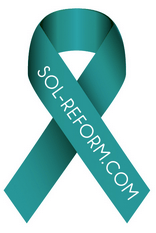RFRA Perils: Mission
This site is intended to educate the public about the truth behind the Religious Freedom Restoration Act (RFRA) culture war. RFRAs do not protect “First Amendment” freedoms. They go much farther. To learn the truth read Professor Marci A. Hamilton’s History of RFRAs. It is time for RFRA supporters to tell the truth to legislators and the people. They want more than the Constitution actually guarantees and that more comes packaged with rights to harm others.
The Never-Ending Spiral of Extreme Religious Liberty
View as PDF: The Never-Ending Spiral of Extreme Religious Liberty
1. 1878-present
Ordered Liberty Under the Constitution, First Amendment, Free Exercise Clause Employment Division v. Smith, 494 U.S. 872 (1990) Church of Lukumi Babalu Aye v. City of Hialeah, 508 U.S. 520 (1993)
Rules: a. Believer must prove law imposes a substantial burden
b. A neutral, generally applicable law is constitutional unless irrational.
c. If law is not neutral or not generally applicable, ordinary strict scrutiny applies:
the government must prove a compelling interest and that the law is narrowly tailored
d. the right is only good against the government (state action)
↓
2. 1972
Wisconsin v. Yoder, 406 U.S. 205 (1972)
Rules: a. Believer must prove a substantial burden
b. Only case where a neutral, generally applicable law is subjected to strict scrutiny
c. Government must prove a compelling interest and that the law is narrowly tailored
↓
3. 1993
Religious Freedom Restoration Act of 1993
Rules: a. Believer must prove a substantial burden
b. Government must prove a neutral, generally applicable law serves a compelling interest
c. Narrow tailoring is replaced by the more extreme “least restrictive means”
d. Relief permitted only “against a government”
↓
4. 2000
Amendments to Religious Freedom Restoration Act (further expansion of rights for believers)
Rules: a. Expands definition of “religious exercise” to be: “any exercise of religion, whether or not compelled by, or central to, a system of religious belief,” including “the use, building, conversion of real property for the purpose of religious exercise” so long as the person, assembly, or institution “uses or intends to use the property for that purpose.”
↓
5. 2000
Religious Land Use and Institutionalized Persons Act
Rules: a. Believer must prove a substantial burden
b. Government must prove a neutral, generally applicable land use or prison law serves a compelling interest
c. Narrow tailoring is replaced by the more extreme “least restrictive means”
d. Relief permitted only “against a government”

 Professor Marci A. Hamilton
Professor Marci A. Hamilton